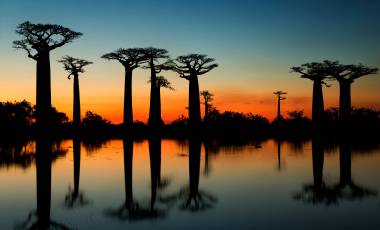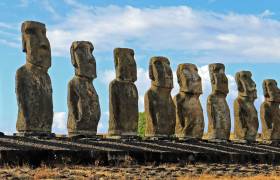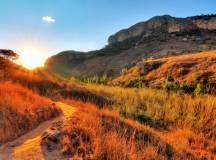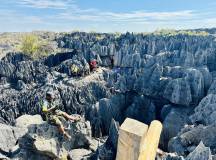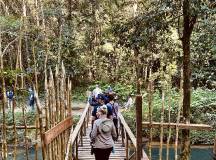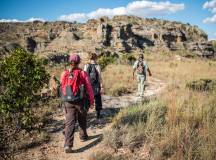There’s nowhere else like it – bizarre wildlife and strange rock formations make this island unique
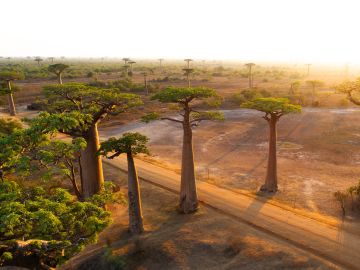
Madagascar Holidays
Activities in Madagascar
Our Top Destinations in Madagascar
Madagascar Tours
Top 5 Highlights of Madagascar Holidays
Isalo National Park: Made up of huge canyons and gorges, imposing rock towers and Jurassic highlands. Isalo National Park is one of the most fascinating and beautiful places to visit on holidays to Madagascar. Among the untamed scenery, you’ll see incredible wildlife such as ring-tailed lemurs, the Malagasy rainbow frog and the native, white-lipped bright-eyed frog.
Ranomafana National Park: Home to natural hot springs, waterfalls and tropical rainforest, Ranomafana is a magnificent park which is listed as a UNESCO World Heritage Site. It spans for 161 square miles and plays host to a wealth of endemic animal and plant species, with 12 species of lemur alone, including the famous golden bamboo lemur. Also, keep your eyes peeled for bats, tenrecs and mongoose.
Ambositra: Known as the city of arts and crafts, Ambositra offers a wonderful introduction to the traditions and culture of Madagascar. Learn about the wood carving industry, wander around the beautiful houses with their ornately carved shutters and balconies and visit a woodcarving workshop to gain a deeper insight into this local craft. You’ll also find an array of handicrafts like baskets, pottery and even locally made honey.
Ifaty Beach: Fringing the Malagasy coastline, Ifaty Beach is one of the most idyllic and wildlife rich in Madagascar. Its soft, white sands sprawl along one of the largest barrier reefs in the world, making it a fabulous area for scuba diving and snorkelling. During the summer months, you can also enjoy a whale watching trip and see humpback whales giving birth. Alternatively, simply relax on the beach and immerse yourself in the ocean views.
Tsimanampetsotsa National Park: One of the most fascinating and biodiverse nature reserves in Madagascar, Tsimanampetsotsa has a unique landscape made up of a large salt lake, limestone plateau, sinkholes and caves. The lake is a wildlife-rich oasis where you can spot some of the 72 bird species such as flamingos, the Madagascar plover and the endangered Grandidier’s mongoose. Around other parts of the park you’ll find lemurs, turtles, reptiles and maki catta.
When is the best time to visit Madagascar?
Depending on what you want to see during your trip, the best times to visit Madagascar will vary. Between January and March is the rainy season, meaning the ensuing spring is lush and lemurs and reptiles are easier to spot. From April to June, you can expect some heavy rain, however, there does tend to be plenty of sunshine in between. If you prefer to avoid the rain, July and August remain relatively dry and cool and are pleasant months for trekking or cycling trips. From late July to early September, you can enjoy whale watching off the coast, and many other wildlife species such as lemurs, reptiles and tenrecs are more active.
Is Madagascar good for cycling?
Its diverse landscapes made up of dramatic highland plains, unspoilt coastline and mountain backdrops make the island an exceptional destination for a cycling holiday. You’ll find a mixture of scenic back roads, quiet main roads and mountain trails. The quality of the roads can vary but where they are uneven and unsuitable for cycling, you can take the bus and enjoy more of the scenery. Exploring Madagascar by bike is extremely rewarding as you can travel further distances than on foot and you’ll also get close up to the flora and fauna.
FAQs on Madagascar Tours
There are a staggering 19 national parks, six nature reserves and two marine reserves as well as smaller special reserves. But what’s even more impressive is that most of the flora and fauna found in the parks is endemic to Madagascar. While many of the parks share the same natural beauty, each has its own distinctive charms, from hidden waterfalls and rare mountain orchids to epic baobab trees and tropical rainforest.
Most traditional dishes eaten in Madagascar consist of rice which is accompanied by either meat or fish. Vegetable soup, known as lasopy, and meat stews made with green vegetables are favourites among the locals. A delicacy that we recommend trying is fish in coconut sauce which is often served in the coastal regions owing to the abundance of fresh seafood. The fish is gently grilled and served alongside vegetables, pasta and a spicy sauce. Akoha is another popular dish made with chicken, rice, onions, chilli and other spices.
Endemic to Madagascar, lemurs can be found across all the country, particularly in the nature reserves and national parks. Out of the 100 species found on the island, Ranomafana is home to approximately 20 different species, with red-fronted brown lemurs and black-and-white ruffed lemurs being among the most common. Andasibe National Park is another great place to see these adorable creatures and is home to the largest species, the indri, as well as the sleeping woolly lemur and the common brown lemur.
While there are no essential vaccinations required, it’s always a good option to speak with your local GP about any recommendations they might have such as tuberculosis, polio, Hepatitis A, Tetanus or typhoid. We highly advise making sure you’re protected from any risk of malaria or dengue fever, which can be spread from mosquito bites.
The island is famous for its soft, white sands and emerald waters so wherever you go you’ll find idyllic beaches. Ifaty Beach is quieter than many others and is home to baobob trees, wandering tribesmen and wildlife-rich coral reefs, making it ideal for snorkelling, diving and whale watching.
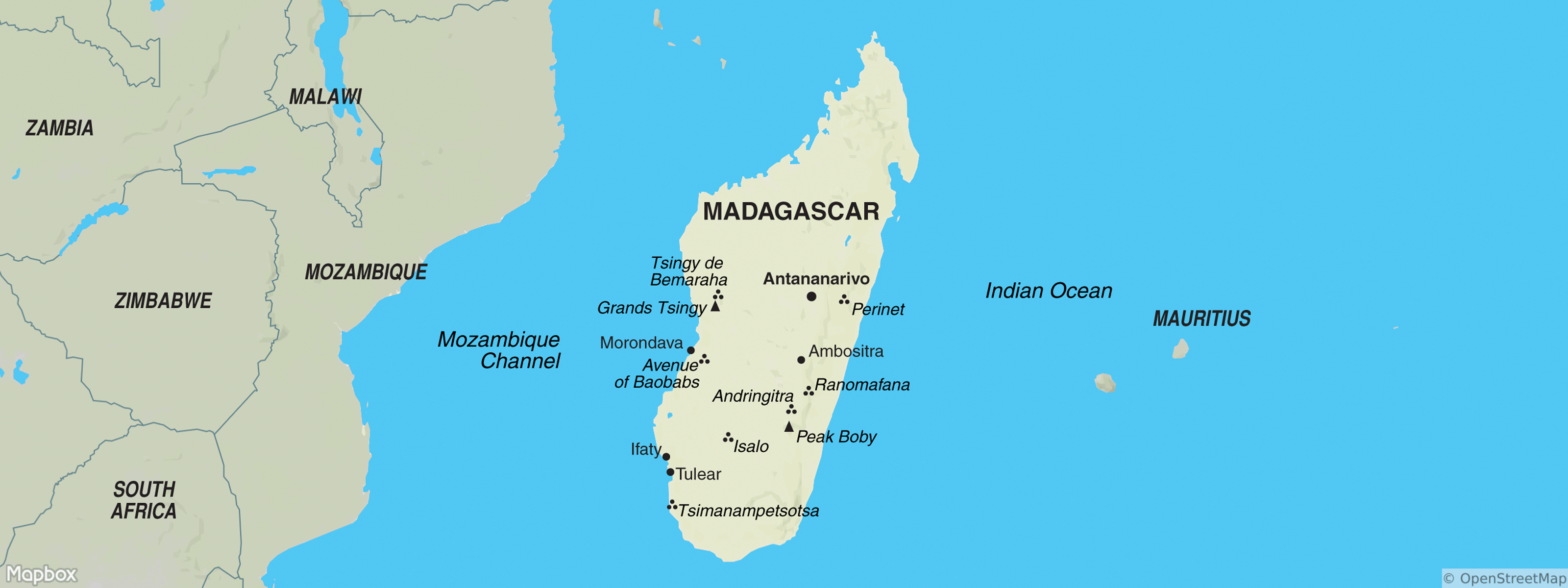
Expert Blog Entries
The Adventure Begins Here
Get regular inspiration straight to your inbox from Exodus’ experts.
